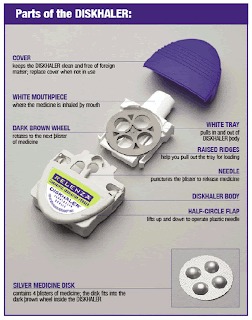At the beginning of November, the local Co-op, or the cooperative store, OR private business on campus that cooperates with the school to sell general food and household products (whew that's long), began a "value campaign" in which, during a rather nifty price cutting session, people could possibly win prizes while doing their shopping at co-op, by entering into a raffle.
The system for getting tickets to enter said raffle is fairly interesting.
Each time an individual spends 400 yen, or about 4 dollars, they receive a "抽選補助巻" {Chuusenhojomaki), or a "raffle assistant ticket" which looks like this:
 Don't ask why I'm so vain. XD
Don't ask why I'm so vain. XDNotice that these are translated as "assistant" tickets. This suggests that simply getting one of these bad boys is not enough. In fact, to even enter the raffle, you must collect ten of these "assistant" tickets, and then trade them in for one legitimate ticket. The REAL ticket is much like you'd expect; it has a ticket number that you input into a form online to enter for a chance to win prizes.
What kind of prizes?
Well look at this link here!
http://www.hokkaido.seikyou.ne.jp/value/
Or this screen cap I took, if you're lazy. Though you still might want to click it.
 Crazy Japanese advertising...
Crazy Japanese advertising...
What kind of prizes?
Well look at this link here!
http://www.hokkaido.seikyou.ne.jp/value/
Or this screen cap I took, if you're lazy. Though you still might want to click it.
 Crazy Japanese advertising...
Crazy Japanese advertising...One person can win a PS3, one person a Wii, two people walk away with brand new computers, 15 people get ipod nanos, and so on.
Naturally, I figured hey, I buy lunch often enough from the university... why not go for it?
Because 10 tickets is a deceivingly large amount of money. It's 4000 yen, or around 40 usd. And this assumes you spend 400 yen perfectly each time. Obviously you'd always spend more, so who knows how much money you'd spend to get 10 of those! Could be even 7000 yen!
For one chance at those prizes.
So really... you should just save your money and buy a nano yourself. It'd be far cheaper.
Unless you're smart like me, and you continue buying lunch as normal and mooch all your friends for the tickets they don't want to use.
That's some ego boosting right there. But essentially all my friends gave me the tickets they also got, since we all usually buy stuff from co-op at SOME point.
Well... Mike... that's cool and all. But did your plan work? How many did you get?

Six. I got six. Quick math makes that about 2.4 man, or 240 dollars of tickets. More like 300.
I am evil.
Now I sure hope this gives me any chance at all; closer inspection of the contest reveals that it's not just for the Sapporo campus but for ALL campuses of Hokkaido University.
Crapz.
But maybe other people won't spend as much money as I (through cooperation) amassed, right? Right?
Urg...
With me luck? I'd love a new free something! We'll find out December 9th!
- Mike
Naturally, I figured hey, I buy lunch often enough from the university... why not go for it?
Because 10 tickets is a deceivingly large amount of money. It's 4000 yen, or around 40 usd. And this assumes you spend 400 yen perfectly each time. Obviously you'd always spend more, so who knows how much money you'd spend to get 10 of those! Could be even 7000 yen!
For one chance at those prizes.
So really... you should just save your money and buy a nano yourself. It'd be far cheaper.
Unless you're smart like me, and you continue buying lunch as normal and mooch all your friends for the tickets they don't want to use.
That's some ego boosting right there. But essentially all my friends gave me the tickets they also got, since we all usually buy stuff from co-op at SOME point.
Well... Mike... that's cool and all. But did your plan work? How many did you get?

Six. I got six. Quick math makes that about 2.4 man, or 240 dollars of tickets. More like 300.
I am evil.
Now I sure hope this gives me any chance at all; closer inspection of the contest reveals that it's not just for the Sapporo campus but for ALL campuses of Hokkaido University.
Crapz.
But maybe other people won't spend as much money as I (through cooperation) amassed, right? Right?
Urg...
With me luck? I'd love a new free something! We'll find out December 9th!
- Mike



